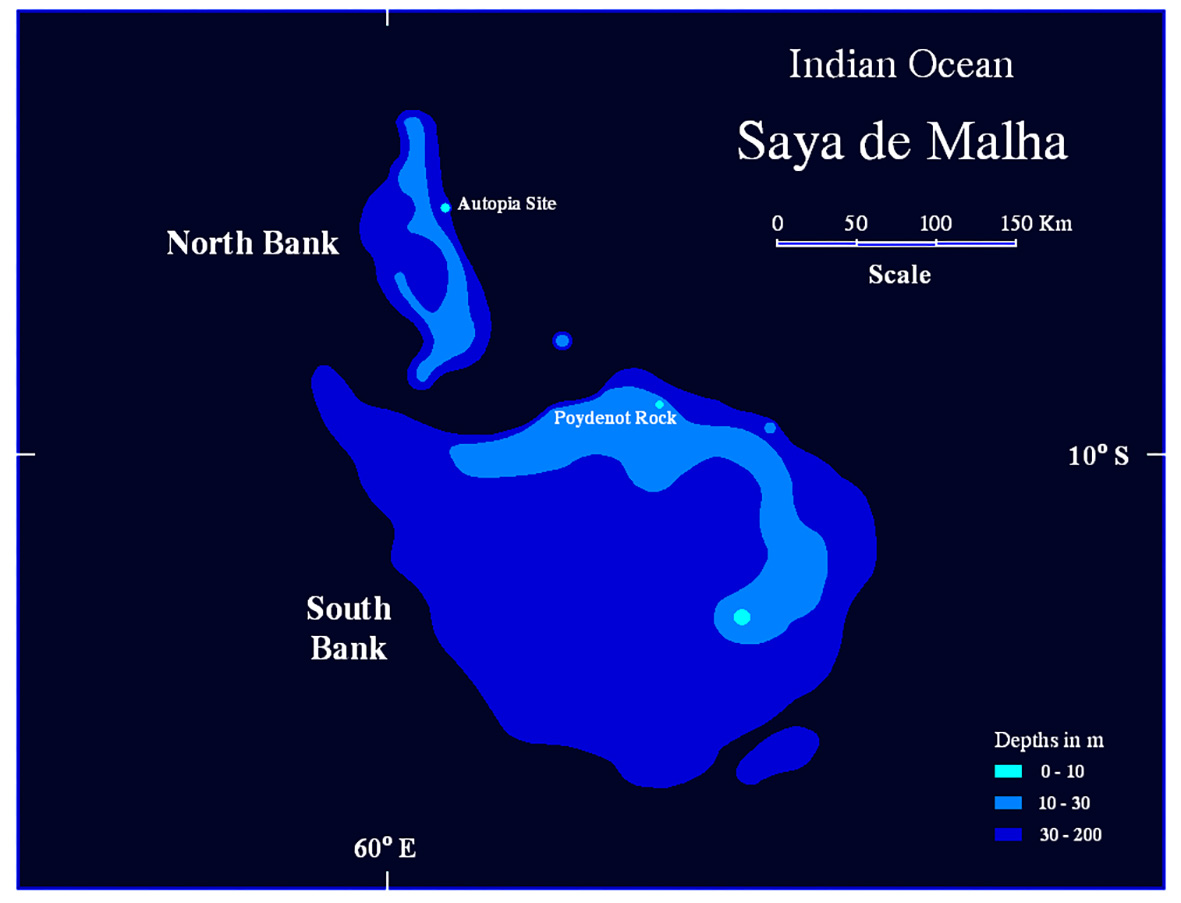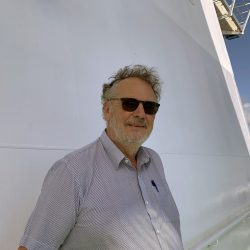François Simard, secretary of the Indian Ocean Mission’s Steering Committee, provides an update on the governance of the Saya de Malha bank.
Exclusive economic zone, Law of the Sea, joint management… an opportunity to see things a little more clearly, and to appreciate the importance that the results of the scientific investigations carried out during this mission could have for future decision-making.
The challenges of governing Saya de Malha
This immense shoal, more than 300 km from the first submerged land and the size of Switzerland, is subject to a unique form of governance, the result of the complexity of the Law of the Sea.
Located outside the exclusive economic zones (EEZs) of the nearest countries, which are the Seychelles to the north-west and Mauritius to the south, it is therefore on the high seas.
However, Mauritius and the Seychelles, in accordance with the possibility offered by the Law of the Sea, have applied to extend their legal continental shelf to include the Saya de Malha.
Unlike other countries in similar situations, i.e. with a common continental shelf, they did not wish to establish a delimitation, but instead declared a joint extended continental shelf.
For its management, they have declared a Joint Management Area (JMA) and created a Management Commission.
But the water column, not included in the notion of continental shelf, remains on the high seas!

The Saya de Malha is therefore under a dual governance status, with the seabed and its resources under the joint governance of Mauritius and the Seychelles, and the entire water column and its resources under the high seas regime.
When it comes to potential oil, gas and mineral resources, the two island countries will need to find very robust cooperation mechanisms to agree on a common vision, define a common strategy, carry out exploration and exploitation together if necessary, and share the benefits.
For tuna fishing, the Indian Ocean Tuna Commission (IOTC) is at the helm.
This regional fisheries management organization (RFMO), with its 28 members and 30 years of experience, and of which Mauritius and Seychelles are members, will remain the decision-making body.
For benthic fishing, as for tuna, there is an RFMO dedicated to these fisheries for this part of the high seas, the APSOI (Southern Indian Ocean Fisheries Agreement), created in 2012, and 11 members strong, including the Seychelles and Mauritius.
Logically, it is APSOI’s responsibility to take decisions on the management of bottom fisheries on the Saya de Malha, but as JMA is responsible for the management of bottom resources under the extended continental shelf, the question arises as to which is ultimately the right governance body for the benthic living resources of this area.
For fish, the logic would be to say that they don’t belong to the bottom resources, being able to move away from them, and therefore fall under the governance of APSOI.
For other species, such as sea cucumbers, which are one of the species of interest to Seychelles fishermen, it might be thought that it is up to the JMA Commission to take decisions on the management of this resource.
Here again, the two countries concerned will have to reach agreement and coordinate to avoid any kind of conflict.
That said, as each of these governance structures is rather jealous of its prerogatives, it is not certain that the sharing of responsibilities will take place so easily!
As far as the conservation of sites is concerned, and in particular the creation of marine protected areas, each of the players can make the declaration according to their own competencies.
But if Mauritius and the Seychelles were to decide to create a marine protected area on the Saya de Malha seabed, it’s hard to see how APSOI could ignore it, especially as both countries are members.
In any case, future decisions will have to be based on the best available scientific data.
On board the Agulhas II, research will focus on the seabed as well as the water column, but not on the shallows, i.e. the sea bed.
In its wisdom, the expedition management has decided that all the information gathered during this campaign will be public(open access), so that the various parties involved – Seychelles, Mauritius, JM, IOTC or APSOI – will have access to it and be able to use it.
And it will be up to the two countries “bordering the sea” to defend their rights in this ocean of international complications!

François Simard
Secretary of the Indian Ocean Mission Steering Committee.
Previously Deputy Director of IUCN’s Marine and Polar Program.
